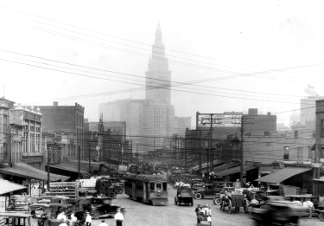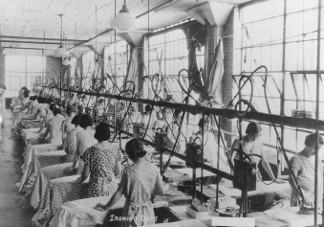MICHELSON, ALBERT ABRAHAM (19 Dec. 1852-9 May 1931), the first American to win a Nobel prize in the sciences (physics, 1907), was born in Strelno, Prussia (Strzelno, Poland), the son of Rosalie (Przylubska) and Samuel Michelson. He came to America with his parents in 1855. Michelson was educated in San Francisco and Virginia City, NV and attended the U.S. Naval Academy (1869-73) where he ranked first in his class in optics.
Michelson began measurements of the speed of light while an instructor in Physics and Chemistry at the Academy. After a leave of absence in 1880 to study in Europe, he secured appointment as chair of the Dept. of Physics at the Case School of Applied Science and resigned his naval commission. He assumed his position in Cleveland in 1882 and resumed his measurements of the speed of light, arriving at a figure of 186,320 miles per second. This figure remained the accepted standard for 45 years until Michelson further refined this determination while at Mt. Wilson in Calif. In 1886, with Professor EDWARD E. MORLEY† of Western Reserve University, he undertook the MICHELSON-MORLEY EXPERIMENT to measure the motion of the earth through the "luminiferous aether."
In 1889 Michelson left Case for Clark University where he remained briefly until accepting the chairmanship of the Department of Physics at the University of Chicago. In the years which followed, he developed various optical measuring methods and refined his measurements of the speed of light. He published more than seventy scientific papers and books. Among his awards were the Rumford Premium Medal of the American Academy of Arts and Sciences, the Copley Medal of the Royal Society of London and the Royal Astronomical Society medal.
He married Margaret Hemingway in 1877. They had three children and were divorced in 1898. A year later he married Edna Standon; they had three daughters.
Last Modified: 21 Jul 1997 10:41:16 AMLivingston, Dorothy Michelson. The Master of Light: A Biography of Albert A. Michelson (1973).
- Related Article(s)









